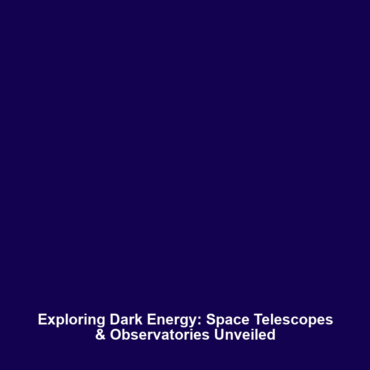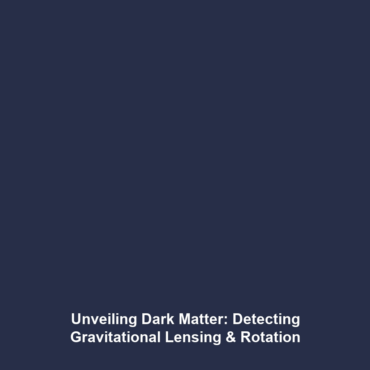The Bullet Cluster: Insights into Dark Matter
The Bullet Cluster, a striking astronomical phenomenon, has fundamentally altered our understanding of dark matter and dark energy. Observed through its unique collision of galaxy clusters, this extraordinary event highlights the invisible components of the universe. As researchers investigate the implications of the Bullet Cluster, it becomes evident that this cosmic collision holds vital clues about the formation and behavior of dark matter. In this article, we delve into key concepts, real-world applications, challenges, and future research paths tied to this compelling subject.
Key Concepts of The Bullet Cluster
The Bullet Cluster comprises two galaxy clusters that collided at extremely high velocities, creating a visible shockwave similar to the sonic boom produced by an aircraft. Here are some major concepts associated with this event:
- Mass Distribution: The Bullet Cluster enables scientists to measure the distribution of mass within the universe, particularly dark matter, which does not emit light and can only be detected via gravitational effects.
- Gravitational Lensing: Observations show how light from background galaxies is distorted by the mass of the Bullet Cluster, providing compelling evidence for the existence of dark matter.
- The Nature of Dark Matter: The findings from the Bullet Cluster challenge the notion of baryonic matter being responsible for gravitational attraction, emphasizing the role of dark matter in cosmic structures.
Applications and Real-World Uses
The insights gained from studying The Bullet Cluster have numerous applications in the realm of dark matter & dark energy. Here are some practical uses:
- Astrophysical Models: Researchers utilize data from the Bullet Cluster to refine models of galaxy formation and evolution, aiding our overall understanding of the cosmos.
- Technological Innovations: Techniques employed in analyzing the Bullet Cluster lead to advances in imaging technologies and data analysis methods, which can be adapted for other scientific fields.
- Public Awareness: The captivating visuals and implications of the Bullet Cluster are leveraged in educational programs to increase public interest in astronomy and physics.
Current Challenges in Research
Despite the significant findings associated with The Bullet Cluster, researchers face several challenges, including:
- Limited observational tools to detect dark matter directly.
- The ongoing debate regarding the nature and properties of dark matter.
- Discrepancies between the predicted and observed galaxy behaviors from simulations.
Future Research and Innovations
Future research focused on the Bullet Cluster is expected to yield groundbreaking innovations that may alter our understanding of dark matter & dark energy. Potential areas for exploration include:
- Next-Generation Telescopes: Upcoming telescope technologies, such as the James Webb Space Telescope, will enhance our capability to observe distant cosmic phenomena.
- Theoretical Models: Ongoing work in particle physics might offer new insights into the composition of dark matter and its interactions.
- Collaboration Across Disciplines: The fusion of astrophysics, cosmology, and technology is expected to bring about innovative approaches to studying dark matter.
Conclusion
In summary, The Bullet Cluster has proven to be a vital astronomical event that continues to advance our understanding of dark matter & dark energy. As research progresses, the collaboration between various scientific disciplines holds promise for unraveling the mysteries of the universe. For those interested in the origins and composition of the cosmos, further exploration of related topics such as Dark Energy and Dark Matter Research can provide deeper insights.









